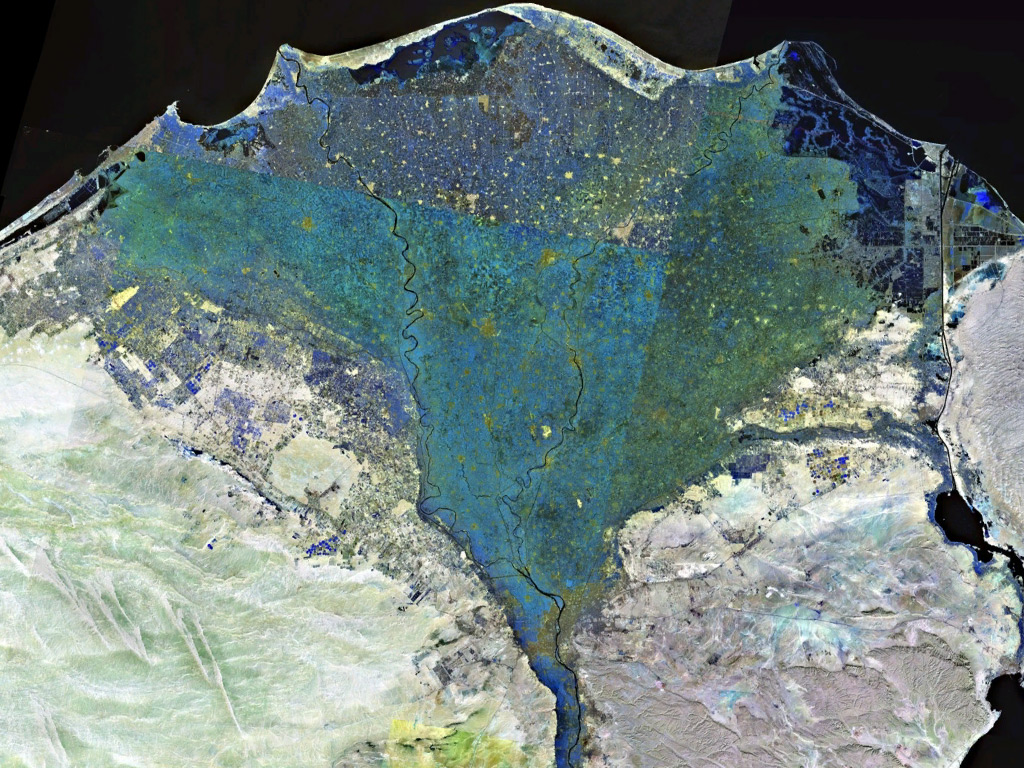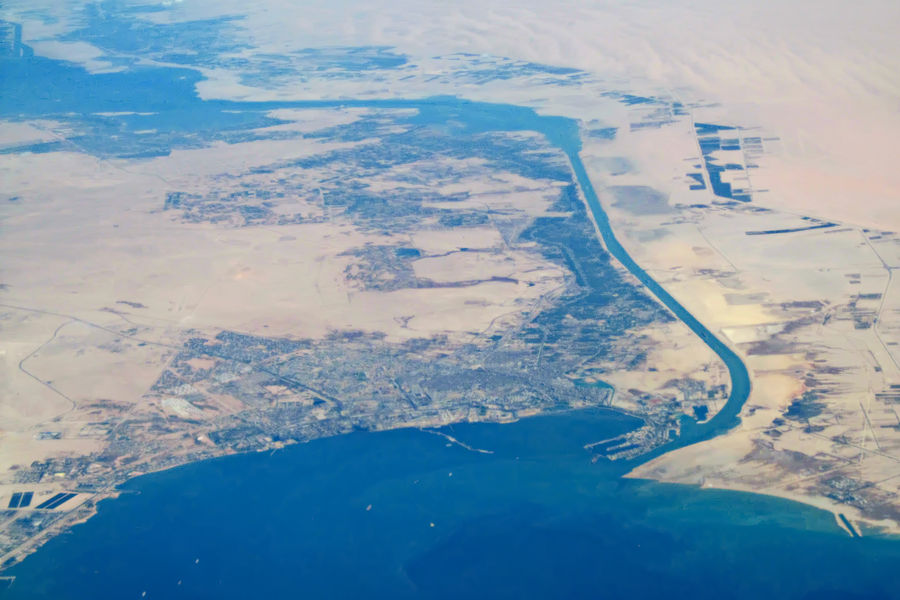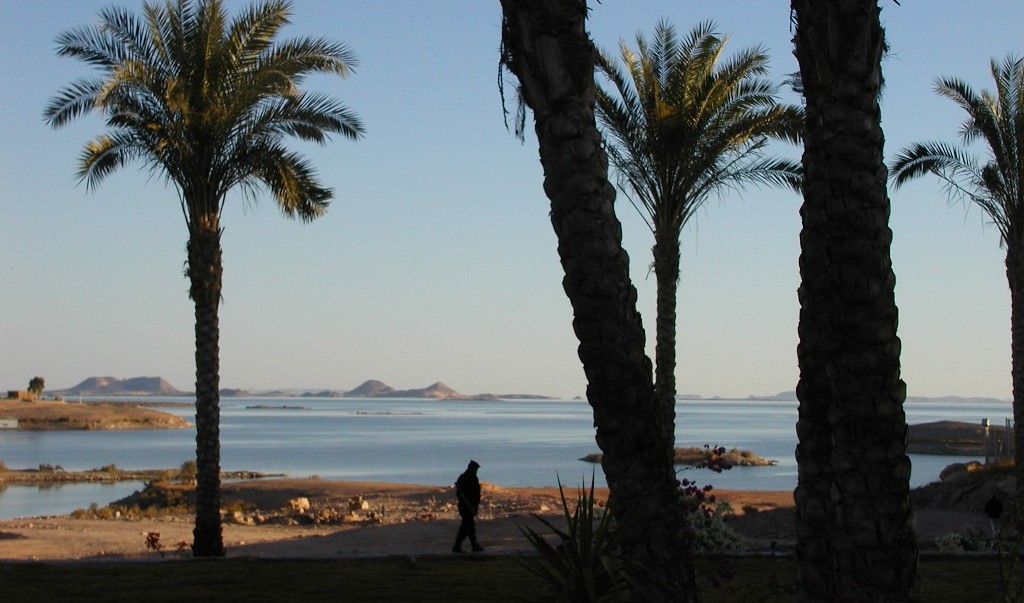|
Lake Manzala
Lake Manzala ( ''baḥīrat manzala''), also Manzaleh, is a brackish lake, sometimes called a lagoon, in northeastern Egypt on the Nile Delta near Port Said and a few miles from the ancient ruins at Tanis.Dinar, p.51 It is the largest of the northern deltaic lakes of Egypt. As of 2008 it is long and wide.Zahran, p.283 Etymology The lake's name derives from . In Middle Ages it was also known as pi-Manjōili (), translated into Greek as Xenedokhou (), thus making the modern Arabic name a translation of a Coptic one, where phonetic resemblance is only coincidental. Geography Lake Manzala is long but quite shallow. Though Lake Manzala's unaltered depth is only , alterations to the depth were made during the construction of the Suez Canal to allow the Canal to extend lengthwise along the lake. Its bed is soft clay. Before construction of the Suez Canal, Lake Manzala was separated from the Mediterranean Sea by a strip of sand wide. Port Said was established adjacent to Lake Man ... [...More Info...] [...Related Items...] OR: [Wikipedia] [Google] [Baidu] |
Nile Delta
The Nile Delta (, or simply , ) is the River delta, delta formed in Lower Egypt where the Nile River spreads out and drains into the Mediterranean Sea. It is one of the world's larger deltas—from Alexandria in the west to Port Said in the east; it covers of the Mediterranean coastline and is a rich agricultural region. From north to south the delta is approximately in length. The Delta begins slightly down-river from Cairo. Geography From north to south, the delta is approximately in length. From west to east, it covers some of coastline. The delta is sometimes divided into sections, with the Nile dividing into two main distributary, distributaries, the Damietta and the Rosetta, flowing into the Mediterranean at port cities with the same names. In the past, the delta had several distributaries, but these have been lost due to flood management, flood control, silting and changing relief. One such defunct distributary is Wadi Tumilat. The Suez Canal is east of the delta ... [...More Info...] [...Related Items...] OR: [Wikipedia] [Google] [Baidu] |
Port Said
Port Said ( , , ) is a port city that lies in the northeast Egypt extending about along the coast of the Mediterranean Sea, straddling the west bank of the northern mouth of the Suez Canal. The city is the capital city, capital of the Port Said Governorate, Port Said governorate and it forms the majority of the governorate, where its seven districts comprise seven of the governorate's eight regions. At the beginning of 2023 it had a population of 680,375 people. The city was established in 1859 during the building of the Suez Canal. There are numerous old houses with grand balconies on all floors, giving the city a distinctive look. Port Said's twin city is Port Fuad, which lies on the eastern bank of the Suez Canal. The two cities coexist, to the extent that there is hardly any town centre in Port Fuad. The cities are connected by free Ferry, ferries running all through the day, and together they form a metropolitan area with over a million residents that extends both on the ... [...More Info...] [...Related Items...] OR: [Wikipedia] [Google] [Baidu] |
Tanis, Egypt
Tanis ( ; ; ) or San al-Hagar (; ; ; or or ; ) is the Greek name for ancient Egyptian ''ḏꜥn.t'', an important archaeological site in the northeastern Nile Delta of Egypt, and the location of a city of the same name. Tanis was the capital of the Egyptian Kingdom in its 21st and 22nd Dynasties. It is located on the Tanitic branch of the Nile, which has long since silted up. History Tanis is unattested before the 19th Dynasty of Egypt, when it was the capital of the 14th nome of Lower Egypt. A temple inscription datable to the reign of Ramesses II mentions a "Field of Tanis", while the city ''in se'' is securely attested in two 20th Dynasty documents: the Onomasticon of Amenope and the Story of Wenamun, as the home place of the pharaoh-to-be Smendes. The earliest known Tanite buildings are datable to the 21st Dynasty. Although some monuments found at Tanis are datable earlier than the 21st Dynasty, most of these were in fact brought there from nearby cities, main ... [...More Info...] [...Related Items...] OR: [Wikipedia] [Google] [Baidu] |
Middle Ages
In the history of Europe, the Middle Ages or medieval period lasted approximately from the 5th to the late 15th centuries, similarly to the post-classical period of global history. It began with the fall of the Western Roman Empire and transitioned into the Renaissance and the Age of Discovery. The Middle Ages is the middle period of the three traditional divisions of Western history: classical antiquity, the medieval period, and the modern period. The medieval period is itself subdivided into the Early, High, and Late Middle Ages. Population decline, counterurbanisation, the collapse of centralised authority, invasions, and mass migrations of tribes, which had begun in late antiquity, continued into the Early Middle Ages. The large-scale movements of the Migration Period, including various Germanic peoples, formed new kingdoms in what remained of the Western Roman Empire. In the 7th century, North Africa and the Middle East—once part of the Byzantine Empire� ... [...More Info...] [...Related Items...] OR: [Wikipedia] [Google] [Baidu] |
Mediterranean Sea
The Mediterranean Sea ( ) is a sea connected to the Atlantic Ocean, surrounded by the Mediterranean basin and almost completely enclosed by land: on the east by the Levant in West Asia, on the north by Anatolia in West Asia and Southern Europe, on the south by North Africa, and on the west almost by the Morocco–Spain border. The Mediterranean Sea covers an area of about , representing 0.7% of the global ocean surface, but its connection to the Atlantic via the Strait of Gibraltar—the narrow strait that connects the Atlantic Ocean to the Mediterranean Sea and separates the Iberian Peninsula in Europe from Morocco in Africa—is only wide. Geological evidence indicates that around 5.9 million years ago, the Mediterranean was cut off from the Atlantic and was partly or completely desiccation, desiccated over a period of some 600,000 years during the Messinian salinity crisis before being refilled by the Zanclean flood about 5.3 million years ago. The sea was an important ... [...More Info...] [...Related Items...] OR: [Wikipedia] [Google] [Baidu] |
Port Said Airport
Port Said Airport serves the city of Port Said, Egypt, at the north end of the Suez Canal. In 2011, the airport served 36,962 passengers (-5.5% vs. 2010). History The airport was previously RAF El Gamil a Royal Air Force station operational during Second World War. The following units were here at some point: * Detachment from No. 33 Squadron RAF between June and September 1941 with the Hawker Hurricane I * No. 73 Squadron RAF between 6 September 1941 and 3 February 1942 with the Hurricane I, IIB & IIC along with the Curtiss Tomahawk IIB * Detachment from No. 80 Squadron RAF between May and July 1943 with the Supermarine Spitfire VC * Detachment from No. 89 Squadron RAF between December 1941 and August 1942 with the Bristol Beaufighter IF * No. 94 Squadron RAF between 1 June 1942 and 14 January 1943 with the Hurricane I & IIC and the Spitfire VC * No. 213 (Ceylon) Squadron RAF between 25 February and 6 May 1944 with the Hurricane IIC, Spitfire VC and IX * No. 238 Squadron ... [...More Info...] [...Related Items...] OR: [Wikipedia] [Google] [Baidu] |
Suez Canal
The Suez Canal (; , ') is an artificial sea-level waterway in Egypt, Indo-Mediterranean, connecting the Mediterranean Sea to the Red Sea through the Isthmus of Suez and dividing Africa and Asia (and by extension, the Sinai Peninsula from the rest of Egypt). The canal is a key trade route between Europe and Asia. In 1858, French diplomat Ferdinand de Lesseps formed the Suez Canal Company, Compagnie de Suez for the express purpose of building the canal. Construction of the canal lasted from 1859 to 1869. The canal officially opened on 17 November 1869. It offers vessels a direct route between the Atlantic Ocean#North Atlantic, North Atlantic and northern Indian Ocean, Indian oceans via the Mediterranean Sea and the Red Sea, avoiding the South Atlantic and southern Indian oceans and reducing the journey distance from the Arabian Sea to London by approximately , to 10 days at or 8 days at . The canal extends from the northern terminus of Port Said to the southern terminus of Port ... [...More Info...] [...Related Items...] OR: [Wikipedia] [Google] [Baidu] |
Lake Timsah
Lake Timsah, also known as Crocodile Lake (); is a lake in Egypt on the Nile delta. It lies in a basin developed along a Fault (geology), fault extending from the Mediterranean Sea to the Gulf of Suez through the Bitter Lakes region. In 1800, a flood filled the Wadi Tumilat, which caused Timsah's banks to overflow and moved water south into the Bitter Lakes about away. In 1862, the lake was filled with waters from the Red Sea, and became part of the Suez Canal. Geography Lake Timsah lies within a depression that spans the isthmus between the Red Sea and the Mediterranean Sea. The lowest points of the depression form shallow natural lakes, of which Timsah is one. The surface area of Lake Timsah covers 5.4 square miles. Most of the lake is marshy and depth rarely exceeds . It has been asserted that, in Ancient history, ancient times, Lake Timsah was the northern terminus of the Red Sea.''The Columbia Encyclopedia'', Sixth Edition, s.v"Suez Canal" Accessed 14 May 2008.Édouard N ... [...More Info...] [...Related Items...] OR: [Wikipedia] [Google] [Baidu] |
Great Bitter Lake
The Great Bitter Lake (; transliterated: ''al-Buḥayrah al-Murra al-Kubrā'') is a large saltwater lake in Egypt which is part of the Suez Canal. Before the canal was built in 1869, the Great Bitter Lake was a dry salt valley or basin. Madl, Pierre (1999)Essay about the phenomenon of Lessepsian Migration, Colloquial Meeting of Marine Biology I, Salzburg, April 1999 (revised in Nov. 2001). References are made to the Great Bitter Lake in the ancient Pyramid Texts. The canal connects the Great Bitter Lake to the Mediterranean Sea and the Red Sea. The canal also connects it to the Small Bitter Lake (; transliterated: al-Buhayrah al-Murra as-Sughra). Ships traveling through the Suez Canal use the Great Bitter Lake as a "passing lane", where they can pass other ships or turn around. Etymology The Modern English and Arabic names are translations of the Greek name (). It was also known in Latin as "dead lake" (). The ancient Egyptian name for the Bitter Lakes region was ''km- ... [...More Info...] [...Related Items...] OR: [Wikipedia] [Google] [Baidu] |
Fishermen In Egypt
A fisherman or fisher is someone who captures fish and other animals from a body of water, or gathers shellfish. Worldwide, there are about 38 million commercial and subsistence fishers and fish farmers. Fishermen may be professional or recreational. Fishing has existed as a means of obtaining food since the Mesolithic period.Profile for the USA * inadequate preparation for emergencies * poor vessel maintenance and inadequate safety equipment * lack of awareness of or ignoring stability issues. Many fishermen, while accepting that fishing is dangerous, staunchly defend their independence. Many proposed laws and additional regulation to increase safety have been defeated because fishers oppose them. Alaska Alaska's commercial fishermen work in one of the world's harshest environments. The hardships they endure include isolated fishing grounds, high winds, seasonal darkness, very cold water, icing, and short fishing seasons, when very long work days are the norm. Fatigue, physica ... [...More Info...] [...Related Items...] OR: [Wikipedia] [Google] [Baidu] |
Lakes Of Egypt
Egypt contains many lakes currently and other lakes that have vanished. Current lakes Lake Nasser A vast reservoir in southern Egypt and northern Sudan created by the damming of the Nile after the construction of the High Dam of Aswan. Manzala Lake Salt or brackish water lake. In northeastern Egypt on the Nile Delta near Port Said, Damietta, Dakahlyia and Sharqyia governorates. Maryut Lake A salt lake in northern Egypt, between Alexandria and Al-Buhira (Beheira actually is named after it) Governorates. Lake Bardawil Salt water lake in North Sinai Governorate. It is said that it is named after King Baldwin I of Jerusalem of the First Crusade and that he was buried there. Lake Moeris or Qaroun Lake Brackish water lake. South River Nile Delta in Fayoum Governorate. Wadi Elrayan Lakes Brackish water lake. In Fayoum Governorate Edko Lake Salt water lake in Al Bouhaira Governorate Toshka Lakes River water lake. In South Western Part of Egypt. Great Bitter ... [...More Info...] [...Related Items...] OR: [Wikipedia] [Google] [Baidu] |







